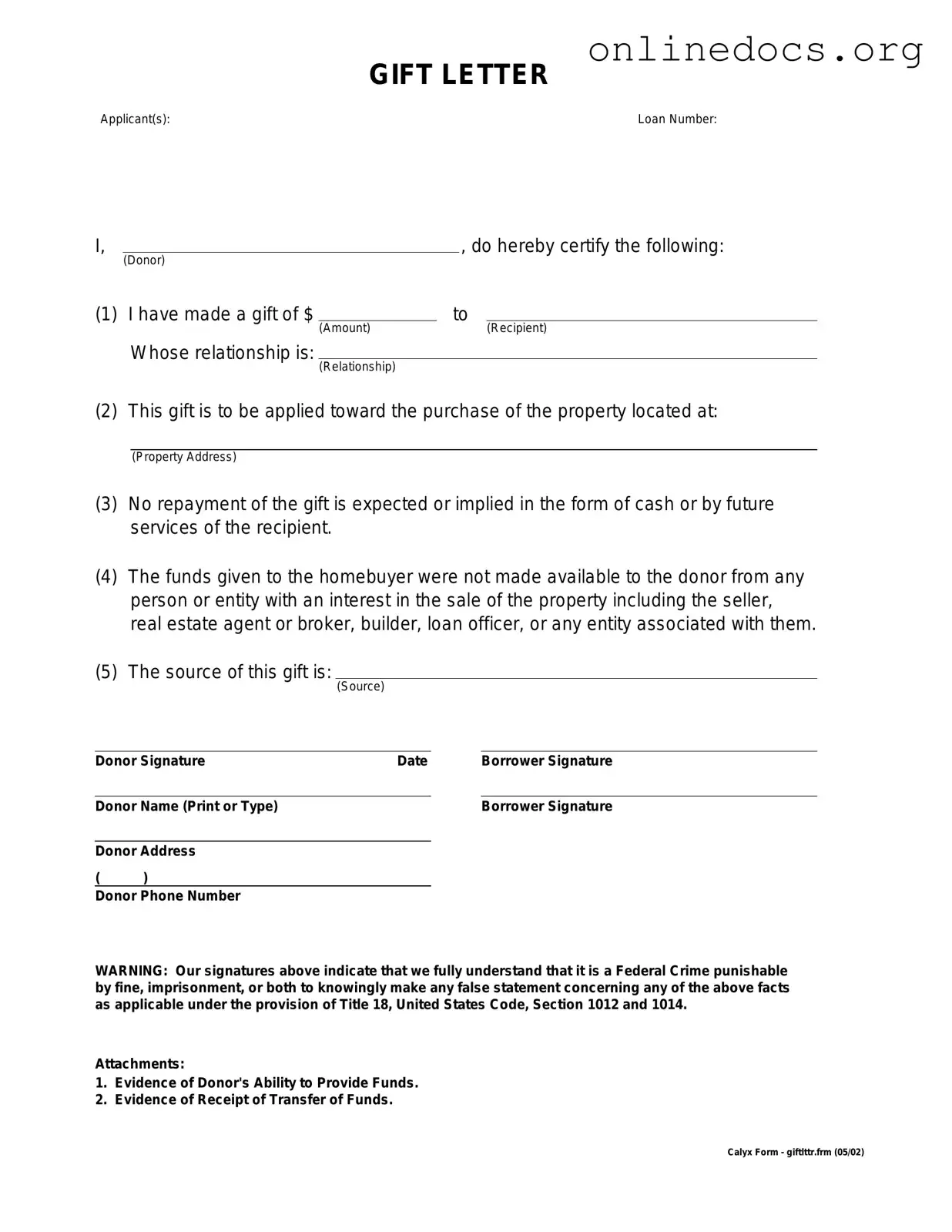The Gift Letter form is similar to the Affidavit of Support, which is often used in immigration cases. This document requires a sponsor to affirm their financial ability to support an immigrant. Like a Gift Letter, it outlines the relationship between the sponsor and the recipient, emphasizing the intention behind the financial support. Both documents serve as proof of financial assistance, ensuring that the recipient will not become a public charge.
The New York Lease Agreement form is a legal document that outlines the terms and conditions between a landlord and tenant for the rental of property in New York State. It serves as a binding contract that specifies the rights and responsibilities of each party during the rental period. This form is crucial for ensuring clear communication and preventing disputes over the use of the property, and you can find a template for this important document at legalformspdf.com.
Another document akin to the Gift Letter is the Loan Agreement. While a Gift Letter indicates that funds are given without expectation of repayment, a Loan Agreement details the terms of a financial loan. Both documents require clarity about the relationship between parties and the purpose of the funds. However, the Loan Agreement includes repayment terms, interest rates, and consequences for default, which are absent in a Gift Letter.
The Promissory Note is also similar to the Gift Letter, as it outlines a promise to pay back borrowed funds. This document details the amount borrowed, repayment schedule, and interest. Unlike the Gift Letter, which indicates a gift with no obligation, the Promissory Note binds the borrower to repay the lender. Both documents highlight the financial relationship between parties, but the Promissory Note includes legal obligations that the Gift Letter does not.
A further comparable document is the Financial Gift Declaration. This document serves to declare the intent to give a gift, much like the Gift Letter. It often includes details about the donor, recipient, and the nature of the gift. Both documents are used to verify that funds are indeed a gift, helping to clarify financial transactions. However, the Financial Gift Declaration may not always require as much detail about the relationship between the parties as the Gift Letter does.
Lastly, the Bank Statement can also bear similarities to the Gift Letter. While a Bank Statement shows actual transactions and account balances, it can serve as evidence of funds available for gifting. Both documents help establish the financial capacity of the donor. However, a Bank Statement lacks the personal touch and intent that a Gift Letter provides, which is crucial in confirming that the funds are indeed a gift and not a loan or payment for services.
